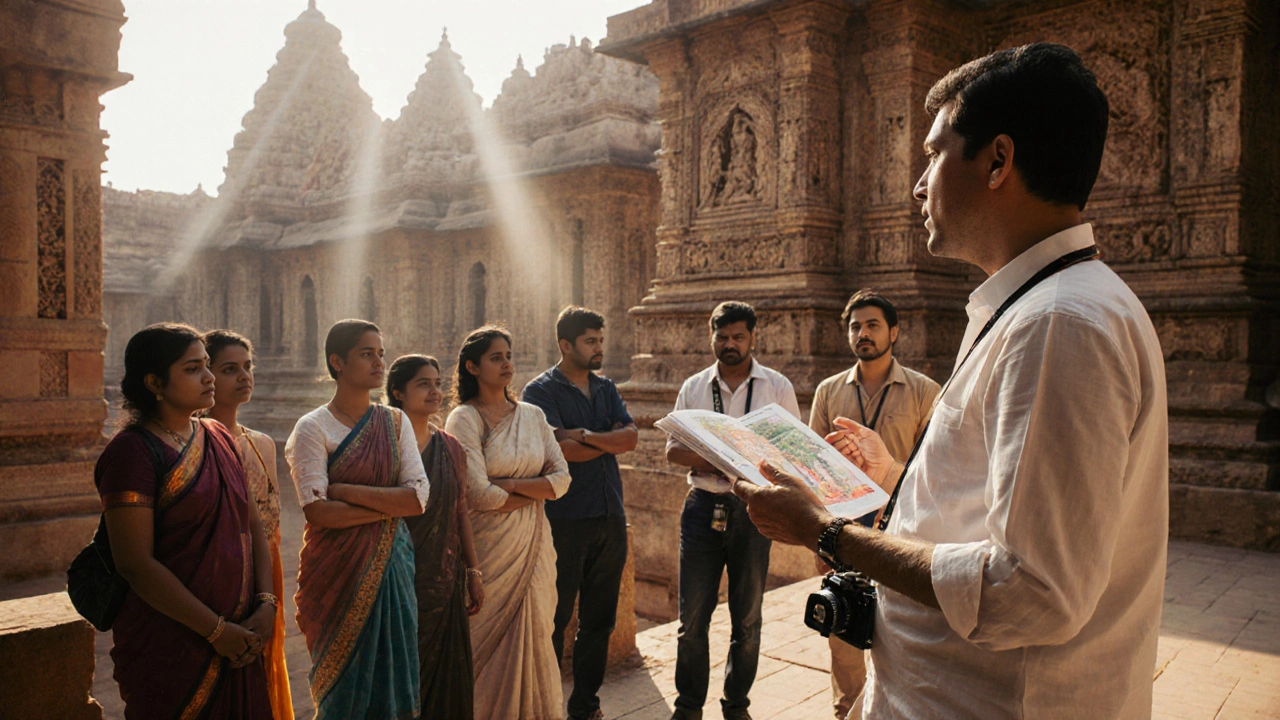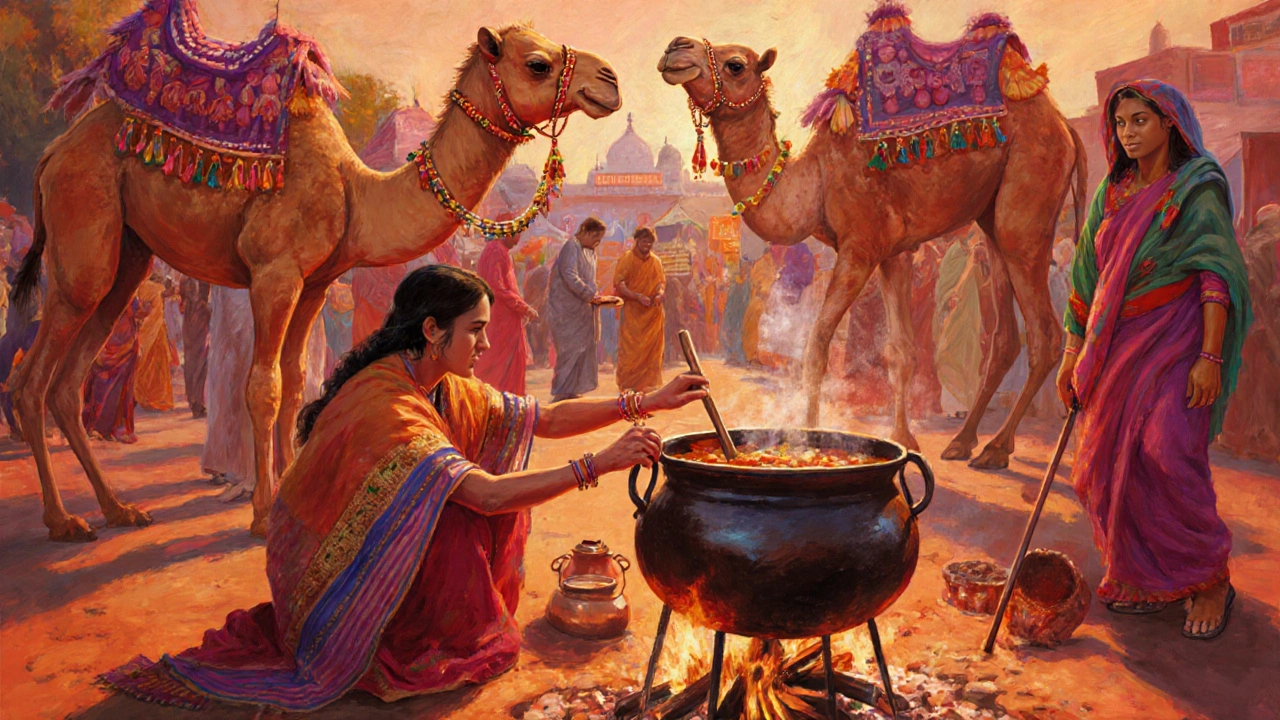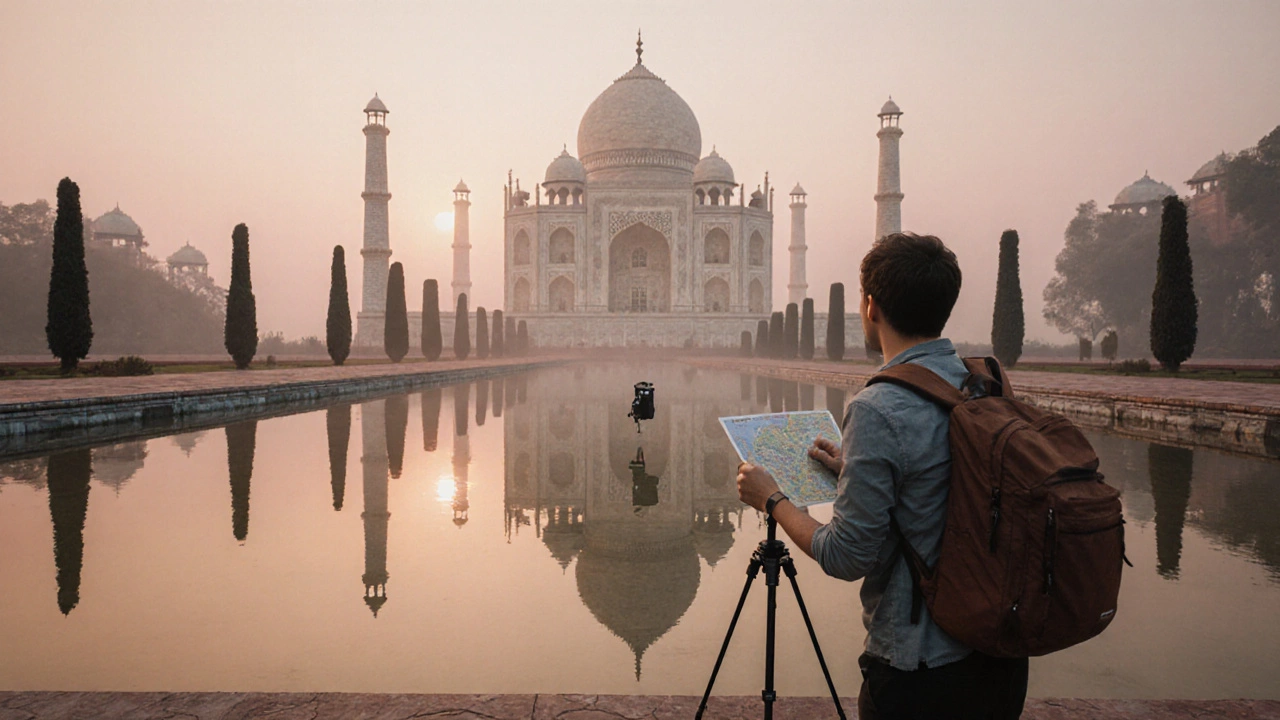Cultural Tourist Type Quiz
Discover Your Cultural Tourism Style
Take this 4-question quiz to identify whether you're a Heritage or Creative Cultural Tourist. Your results will help you plan the perfect trip to India based on the article's key distinctions.
When you hear the word "cultural tourism," you might picture a traveler snapping photos at a famous monument. But the reality is richer: people travel for culture in two distinct ways, each shaping the places they visit and the experiences they seek. Understanding these two types of cultural tourists helps you pick the right destinations in India, plan an itinerary that truly satisfies your curiosity, and avoid common pitfalls that leave you feeling under‑whelmed.
What Defines a Cultural tourist is a traveler who seeks authentic cultural encounters, from historic sites to living traditions.
A cultural tourist isn’t just ticking boxes; they are motivated by learning, appreciation, and participation. In India’s sprawling mosaic of languages, festivals, and heritage, this motivation splits cleanly into two categories that guide everything from transport choices to accommodation style.
The First Type: Heritage tourist focuses on historic monuments, museums, and UNESCO World Heritage sites.
Heritage tourists view culture as a static treasure to be observed. Their itinerary reads like a checklist: Taj Mahal, Jaipur’s forts, the Khajuraho temples, and the caves of Ajanta and Ellora. The hallmark of this type is a deep respect for preservation and a willingness to pay premium entry fees or join guided tours.
- Motivation: Learning about past civilizations and architectural marvels.
- Typical activities: Guided walks, audio‑guide apps, museum visits, photo documentation.
- Preferred accommodations: Heritage hotels or boutique stays near historic districts.
Because heritage sites often have strict visitor caps, planning ahead is crucial. For instance, the Khajuraho Group of Monuments allows only a limited number of daily visitors, and tickets sell out weeks in advance during the winter festival season.
The Second Type: Creative tourist seeks active participation in living arts, festivals, and local crafts.
Creative tourists treat culture as a dynamic performance they can join. They might enroll in a cooking class in Kerala, learn Bharat natyam in Tamil Nadu, or help weave a traditional sari in Varanasi. Their trips revolve around interaction, hands‑on workshops, and immersion in community rituals.
- Motivation: Experiencing culture from the inside, not just viewing it from the outside.
- Typical activities: Artisan workshops, folk‑dance evenings, festival volunteering, homestays.
- Preferred accommodations: Homestays, eco‑lodges, or boutique guesthouses that support local families.
A prime example is attending the Pushkar Camel Fair in Rajasthan, where tourists can watch folk music, help with camel grooming, and even participate in local cooking competitions.
Key Differences at a Glance
| Aspect | Heritage Tourist | Creative Tourist |
|---|---|---|
| Primary Goal | Observe and learn from historic sites | Participate in living cultural practices |
| Typical Destinations | UNESCO World Heritage Sites, museums | Local festivals, artisan workshops |
| Travel Style | Guided tours, structured itineraries | Flexible, experience‑driven schedules |
| Accommodation Preference | Heritage hotels, central‑city inns | Homestays, eco‑lodges, community guesthouses |
| Budget Tendencies | Higher entry fees, guide costs | Variable - often lower lodging cost but may include workshop fees |
How These Types Shape Indian Travel
India’s cultural landscape accommodates both approaches effortlessly. The northern plains host sprawling historic complexes like Mughal Gardens of Kashmir, drawing heritage tourists. Meanwhile, the southern states pulse with living traditions: the annual Onam celebrations in Kerala invite creative tourists to join boat races and traditional feasts.
In practice, many travelers blend the two, but knowing which lens you favor helps prioritize time. If you’re a heritage enthusiast, allocate at least two full days for each major site to absorb the context provided by expert guides. If you lean creative, schedule slower days that allow for workshops that may run over several hours.

Planning Tips Tailored to Each Type
Heritage Tourist Checklist
- Book tickets online for high‑traffic sites (e.g., Taj Mahal sunrise slot).
- Hire a qualified guide certified by the Archaeological Survey of India for deeper insights.
- Carry a portable charger; most museum audio guides require power.
- Check seasonal closures-many hill‑top forts close during monsoon months.
Creative Tourist Checklist
- Contact community‑run workshops in advance; spots fill fast during festival weeks.
- Learn basic local phrases (e.g., "Namaste" in Hindi, "Vanakkam" in Tamil) to build rapport.
- Pack modest clothing for temple participation; many festivals require respectful attire.
- Consider travel insurance that covers cancellations, as many creative experiences are weather‑dependent.
Common Pitfalls and How to Avoid Them
Even seasoned travelers slip up when they assume cultural tourism is one‑size‑fits‑all.
- Over‑scheduling: Packing three heritage sites into a single day leaves no time for context. Space them out or focus on one region per trip.
- Ignoring local customs: Creative tourists sometimes unintentionally disrespect rituals. A quick read on etiquette-like removing shoes before entering a shrine-goes a long way.
- Skipping permits: Certain heritage zones (e.g., Mahabalipuram) require entry permits for foreign nationals. Secure these through official portals.
- Underestimating travel time: India’s traffic can be unpredictable. Factor in buffer time, especially when moving between far‑flung cultural hubs.
Quick Reference Cheat‑Sheet
- Heritage Tourist: Prioritize World Heritage Sites, book guides, allocate 2‑3 days per major complex.
- Creative Tourist: Seek local festivals, book workshops, stay in homestays, respect participatory etiquette.
- Cross‑over tip: Combine both by visiting a heritage site in the morning and joining a nearby craft workshop in the afternoon.
Next Steps for Your Indian Cultural Adventure
Identify which of the two profiles resonates more with your travel personality. Then, map out a rough route using the checklist above. Whether you’re gazing at the marble silhouette of the Taj Mahal or learning the rhythmic steps of a folk dance in Gujarat, the key is intentional immersion. With the right preparation, you’ll walk away with stories that go far beyond a photo album.

What is the main difference between a heritage tourist and a creative tourist?
Heritage tourists focus on observing historic sites and monuments, while creative tourists actively participate in living cultural activities such as workshops, festivals, and craft sessions.
Do I need a guide for heritage sites in India?
A qualified guide adds context and stories that you might miss on your own. For major sites like the Taj Mahal or the forts of Rajasthan, a guide is highly recommended.
Can I combine both types of cultural tourism in one trip?
Absolutely. Many itineraries pair a morning visit to a heritage monument with an afternoon workshop or local festival, giving you a balanced cultural experience.
When is the best time to experience creative tourism in India?
The winter months (October to March) host most major festivals-like Diwali, Pushkar Fair, and Onam-offering vibrant participatory events across the country.
What budget should I allocate for a cultural trip focused on heritage sites?
Budget varies by region, but expect entry fees of $10‑$30 per major site, plus $30‑$60 per day for guides and transport. Adding accommodation and meals, a mid‑range budget of $120‑$150 per day is typical.
